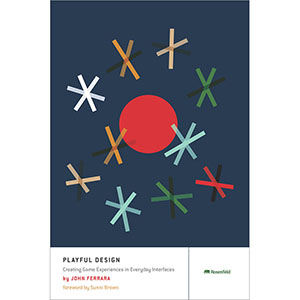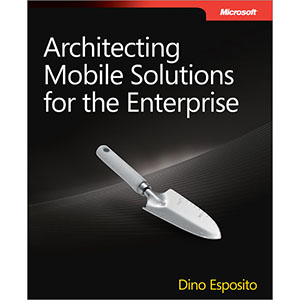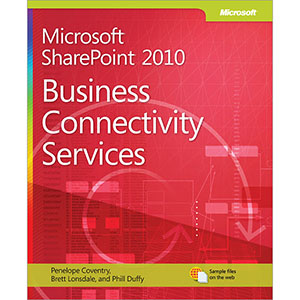| Playful Design Posted: 30 May 2012 04:34 AM PDT 
Book Description Game design is a sibling discipline to software and Web design, but they’re siblings that grew up in different houses. They have much more in common than their perceived distinction typically suggests, and user experience practitioners can realize enormous benefit by exploiting the solutions that games have found to the real problems of design. This book will show you how. Review
For UX designers eager to go beyond simple points and badges, it s been hard to find resources that truly bridge the worlds of UX and game design. John Ferrara’s thorough, thoughtful, and practical book is just what we ve been waiting for.
–Jesse James Garrett, Author, The Elements of User Experience The hype around games and gamification for learning, social change, and impact has hit warp speed. Playful Design is a brilliant beyond-the-hype book that truly sifts the gold from the dross. It is a must read for anyone interested not just in games, but in designing engaging and meaningful human experiences.
–James Paul Gee, Mary Lou Fulton Presidential Professor of Literacy Studies, Arizona State University, Author of What Video Games Have to Teach Us About Learning and Literacy What can the field of UX learn from game design? To answer this question, John Ferrara examines the underlying mechanics behind some familiar (and less familiar) games. But be prepared, you’ll come away with more than a few new tools and ideas added to your design toolbox!
–Stephen P. Anderson, Author, Seductive Interaction Design Table of Contents
Part I: Playful Thinking
Chapter 1. Why We Should Care about Games
Chapter 2. Understanding Games
Chapter 3. The Elements of Player Experience
Chapter 4. Player Motivations Part II: Designing Game Experiences
Chapter 5. Ten Tips for Building a Better Game
Chapter 6. Developing a Game Concept
Chapter 7. Creating Game Prototypes
Chapter 8. Playtesting
Chapter 9. Behavioral Tools
Chapter 10. Rewards in Games Part III: Playful Design in User Experience
Chapter 11. Games for Action
Chapter 12. Games for Learning
Chapter 13. Games for Persuasion
Chapter 14. How Games Are Changing Book Details - Paperback: 264 pages
- Publisher: Rosenfeld Media (May 2012)
- Language: English
- ISBN-10: 1933820144
- ISBN-13: 978-1933820149
Note: There is a file embedded within this post, please visit this post to download the file. Related Posts 

|
| Programming Windows, 6th Edition Posted: 30 May 2012 04:27 AM PDT 
Book Description Programming Windows, Sixth Edition will focus on creating Windows 8 apps accessing the Windows Runtime with XAML and C#. The book will also provide C++ code samples. The Sixth Edition will be organized in three parts: - Part I, "Elementals," begins with the interrelationship between code and XAML, basic event handling, dynamic layout, controls, the application bar, control customization, and collections. You should emerge from Part I ready to create sophisticated page-oriented collection-based user interfaces using the powerful ListView and GridView controls.
- Part II, "Infrastructure," examines the level underneath the UI. In these chapters, you'll go deeper into Windows 8 with a complete exploration of the multitouch interface, asynchronous operations for working with files and web services, networking, security, and globalization. You'll see particular emphasis on data sharing, and interfacing with the search panes and contract panes of Windows 8.
- Part III, "Specialties," explores topics you might not need for every program but are essential to a well-rounded education in Windows 8. It includes working with the sensors (GPS and orientation), vector graphics, bitmap graphics, media, text, printing, and obtaining input from the stylus and handwriting recognizer.
Table of Contents
Chapter 1. Markup and Code
Chapter 2. XAML Syntax
Chapter 3. Basic Event Handling
Chapter 4. Presentation with Panels
Chapter 5. Control Interaction
Chapter 6. WinRT and MVVM
Chapter 7. Building an Application Book Details - Paperback: 420 pages
- Publisher: Microsoft Press (May 2012)
- Language: English
- ISBN-10: 0735671761
- ISBN-13: 978-0735671768
Note: There is a file embedded within this post, please visit this post to download the file. Related Posts 

|
| Architecting Mobile Solutions for the Enterprise Posted: 30 May 2012 04:20 AM PDT 
Book Description Your guide to planning and executing a complete mobile web strategy Revisit your approach to the mobile web—and deliver effective solutions that reach customers and clients on a variety of mobile devices. In this practical guide, web development luminary Dino Esposito shows you how to develop a solid mobile strategy for the enterprise, starting with an effective mobile website. You'll receive essential architectural and implementation guidance, as well as mobile-specific design patterns for building cross-platform and native applications. Discover how to: - Architect a website accessible from many different mobile devices
- Implement design patterns specific to mobile app development
- Examine tools that enable you to write one codebase for many platforms
- Use technologies for building Windows® Phone, iPhone, and Android apps
- Develop cross-platform app features, such as localization and offline behavior
Table of Contents
Part I: Going Mobile
Chapter 1. Pillars of a Mobile Strategy
Chapter 2. Mobile Sites vs. Native Applications Part II: Mobile Sites
Chapter 3. Mobile Architecture
Chapter 4. Building Mobile Websites
Chapter 5. HTML5 and jQuery Mobile
Chapter 6. Developing Responsive Mobile Sites Part III: Mobile Applications
Chapter 7. Patterns of Mobile Application Development
Chapter 8. Developing for iOS
Chapter 9. Developing for Android
Chapter 10. Developing for Windows Phone
Chapter 11. Developing with PhoneGap Book Details - Paperback: 472 pages
- Publisher: Microsoft Press (May 2012)
- Language: English
- ISBN-10: 0735663025
- ISBN-13: 978-0735663022
Note: There is a file embedded within this post, please visit this post to download the file. Related Posts 

|
| Microsoft SharePoint 2010: Business Connectivity Services Posted: 30 May 2012 04:15 AM PDT 
Book Description Put your organization's data to work with Business Connectivity Services in SharePoint 2010—and build valuable business solutions. Led by a team of SharePoint experts, you'll learn how to integrate data from several systems—such as sales, accounting, and inventory—and then search, display, combine, and modify the information using code and no-code SharePoint solutions. This hands-on guide is ideal for SharePoint project managers, business analysts, architects, and administrators. Create a central hub for your business data with SharePoint 2010 - Access data from applications and databases using Business Connectivity Services
- Create external lists in SharePoint to display your business data
- Build dashboards to present charts and key performance indicators
- Use business information offline with Microsoft Office applications
- Create custom SharePoint applications to insert, modify, and delete business data
- Populate SharePoint user profiles with information from several sources
- Build Business Connectivity Service solutions in SharePoint Online
Table of Contents
Part I: Planning and Maintaining Business Connectivity Services
Chapter 1. Making SharePoint the Central Hub for Business
Chapter 2. Introducing Business Connectivity Services
Chapter 3. Creating and Maintaining Business Data Connectivity Service Applications
Chapter 4. Defining External System Connections Using SharePoint Designer Part II: Presenting External Data
Chapter 5. Creating External Lists and Using External Data in Lists and Libraries
Chapter 6. Building Business Data Dashboards
Chapter 7. Using External Data with Office Client Applications
Chapter 8. Finding Information from External Systems
Chapter 9. Using External Data in User Profiles
Chapter 10. Exploring Office 365 and Connecting to External Data Part III: Extending the Out-of-the-Box BCS Functionality
Chapter 11. Using Client-Side Code and External Data
Chapter 12. Building Server-Side BCS Solutions Book Details - Paperback: 420 pages
- Publisher: Microsoft Press (May 2012)
- Language: English
- ISBN-10: 0735660182
- ISBN-13: 978-0735660182
Note: There is a file embedded within this post, please visit this post to download the file. Related Posts 

|






Tidak ada komentar:
Posting Komentar